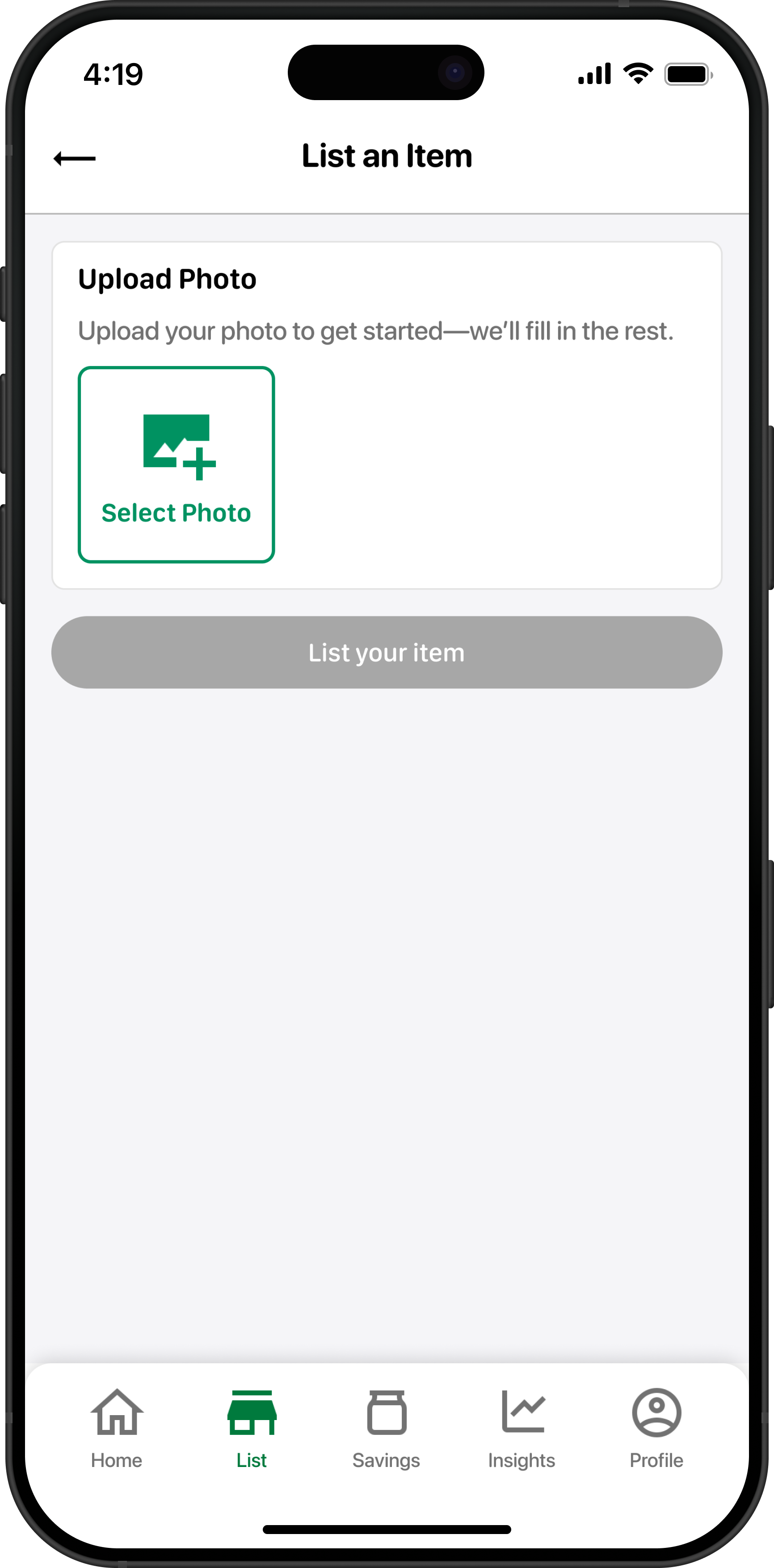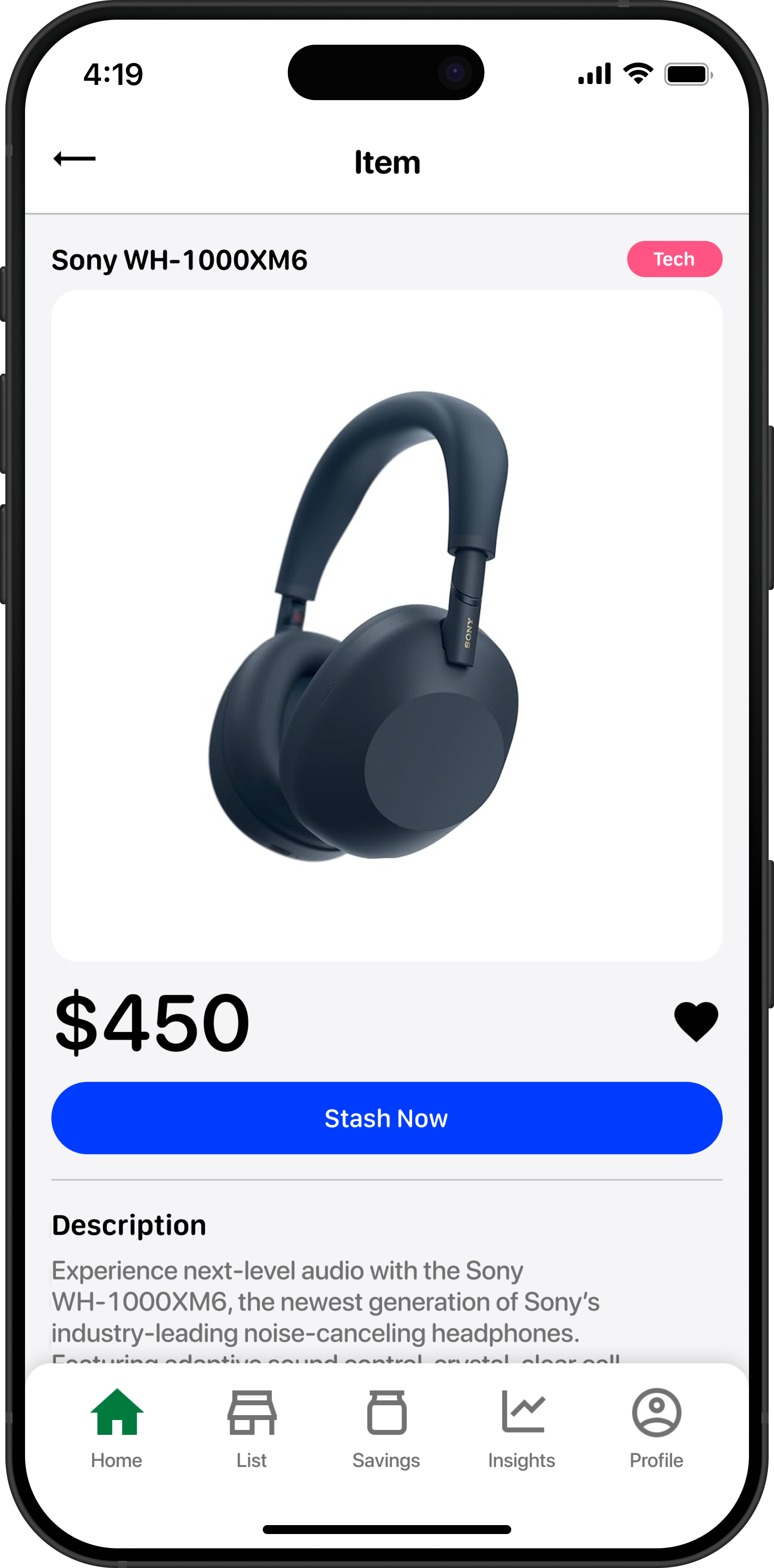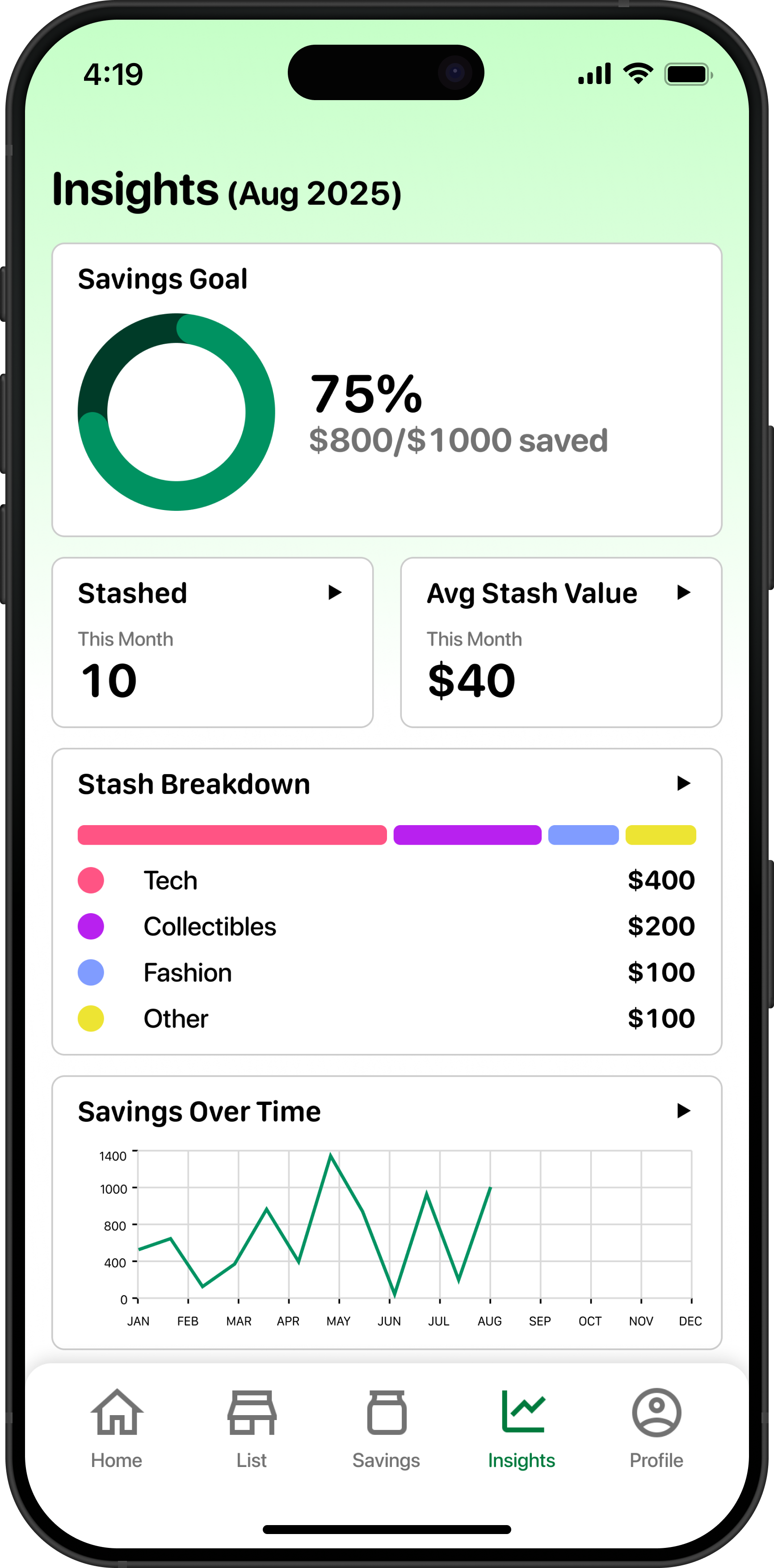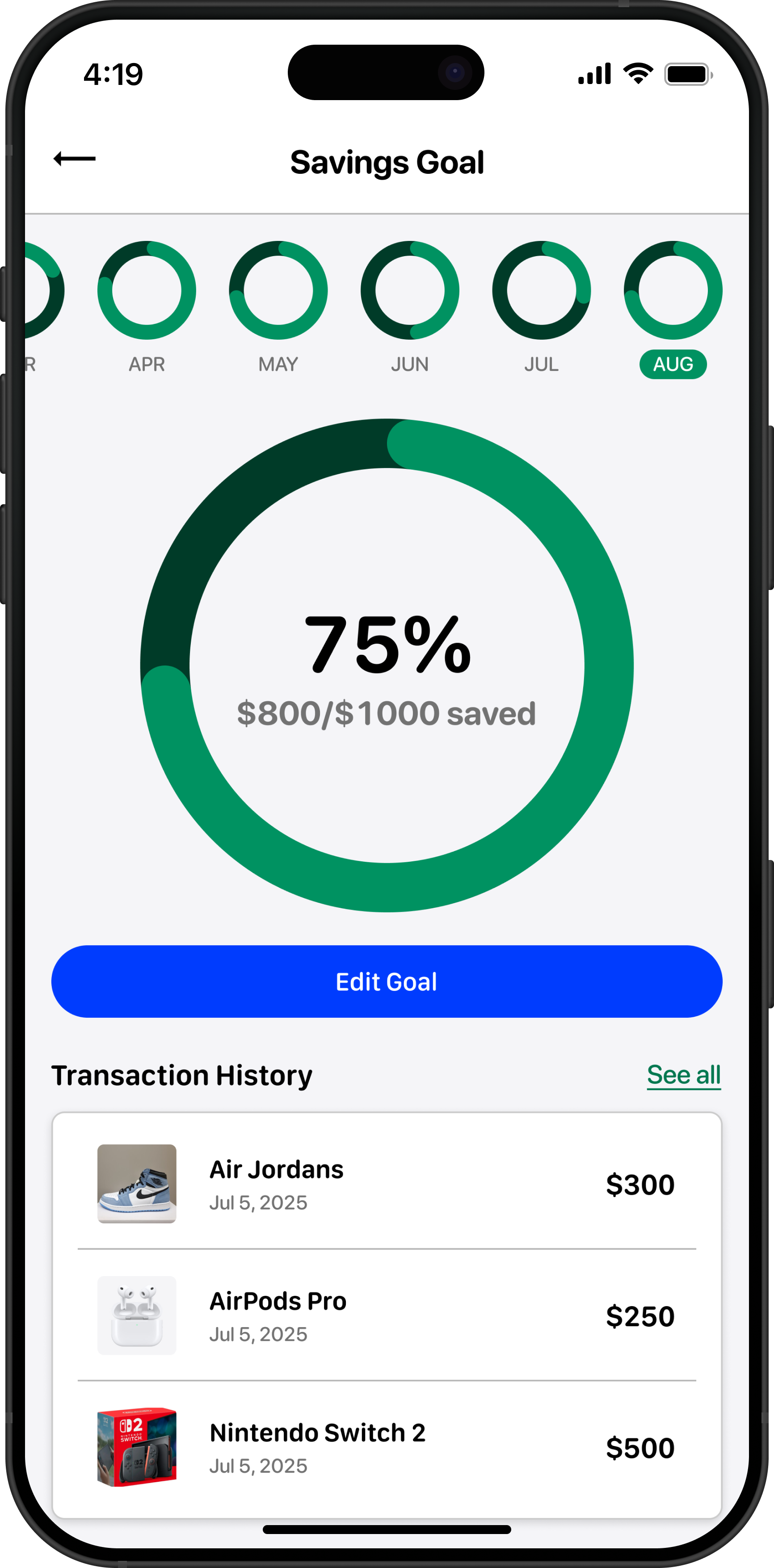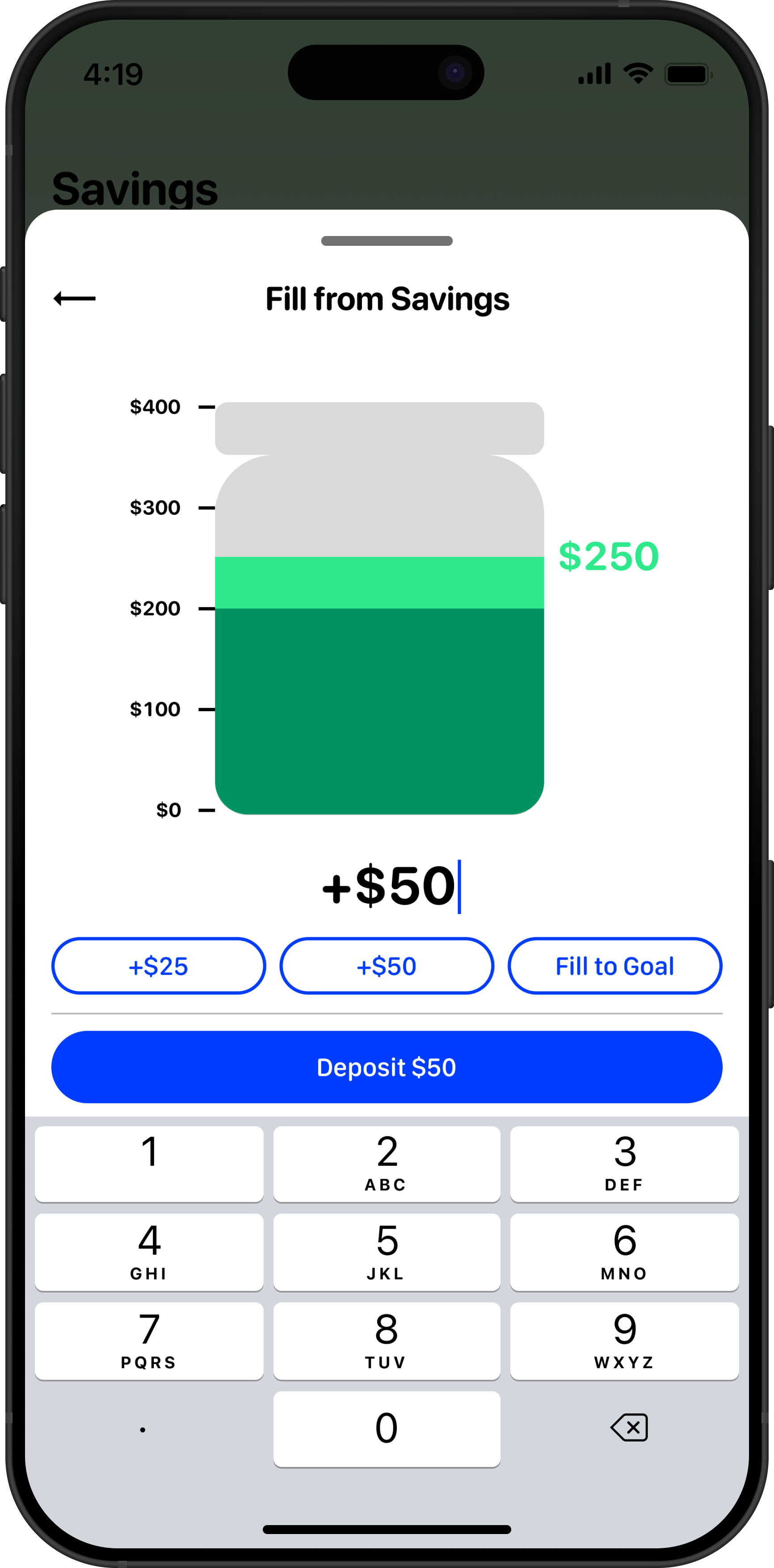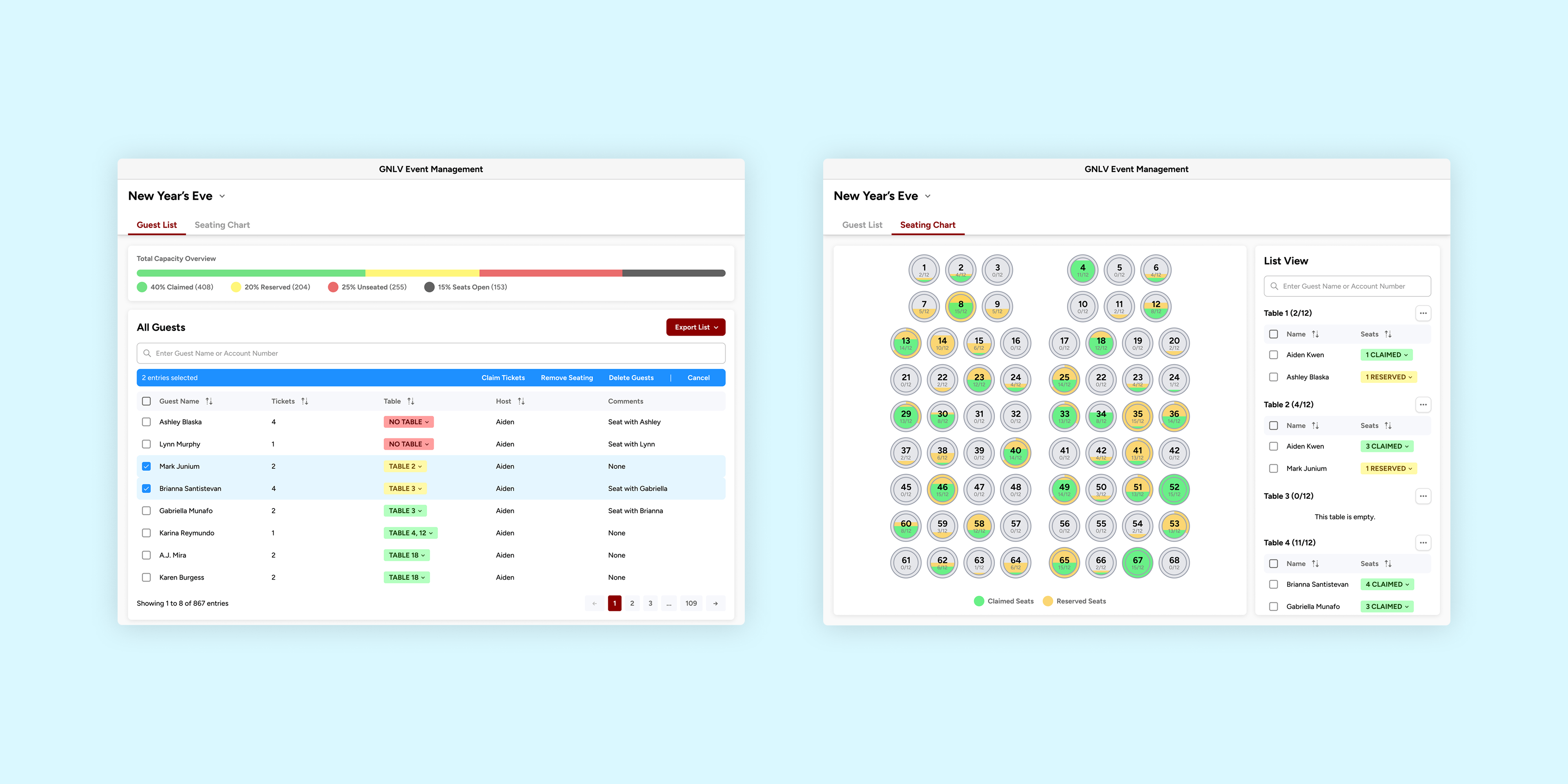TL;DR
How might we capture the ritual of online shopping without the guilt?
With one-click checkout, stored payment info, and endless targeted ads, shopping has become frictionless—and for many, a little too easy.
In response, I designed a mobile experience that blends e-commerce and savings, turning familiar shopping flows into opportunities to save instead of spend.
I conducted user interviews with 5 self-identified online shopping addicts and discovered that for them, buyer's remorse hit the second they clicked Buy.
I designed a mobile experience that was half faux shopping feed and half savings app.




